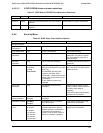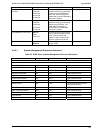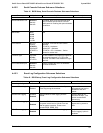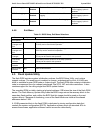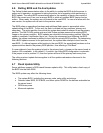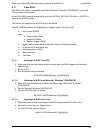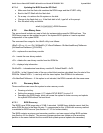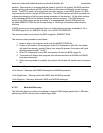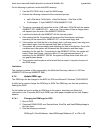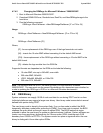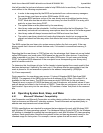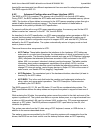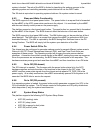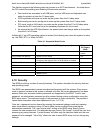
Intel® Server Board SE7320SP2 & Intel Server Board SE7525GP2 TPS System BIOS
Revision 2.0
94
partition. After recovery is complete and the power is cycled to the system, the BIOS partitions
switch and the code executing POST will be the code that was just flashed from the recovery
media. The BIOS is made up of a boot block recovery section, a main BIOS section, an OEM
logo/user binary section, and an NVRAM section. The NVRAM section will either be preserved
or destroyed based on a hot key press during invocation of the recovery. All the other sections
of the secondary BIOS will be updated during the recovery process. If an OEM wishes to
preserve the OEM section across an update, it is recommended that the OEM modify the
provided AMIBOOT.ROM file with the user binary or OEM logo tools before performing the
recovery.
A BIOS recovery can be accomplished from one of the following devices: a standard 1.44 or
2.88 MB floppy drive, an USB Disk-On-Key, or an ATAPI CD-ROM/DVD.
The recovery media must include the BIOS image file, AMIBOOT.ROM.
The recovery mode procedure is as follows:
1. Insert or plug-in the recovery media with the AMIBOOT.ROM file.
2. Power on the system. When progress code E9 is displayed on port 80h, the system
will detect the recovery media (if there is no image file present, the system will cycle
through progress code F1 to EF).
3. When F3 is displayed on port 80h, the system will read the BIOS image file.
4. The screen will display flash progress and indicate whether the NVRAM and CMOS
have been destroyed.
5. When recovery mode is complete, the system will halt and the system can be powered
off.
Note: Three different hot-keys can be invoked:
<Ctrl+Home> - Recovery with CMOS destroyed and NVRAM preserved.
<Ctrl+PageDown> - Recovery with both CMOS and NVRAM preserved.
<Ctrl+PageUp> - Recovery with both CMOS and NVRAM destroyed.
4.7.3.2 Multi-disk Recovery
The Multi-disk Recovery method is available to support ROM images greater than 1 MB when
performing a BIOS recovery from multiple floppy disks.



